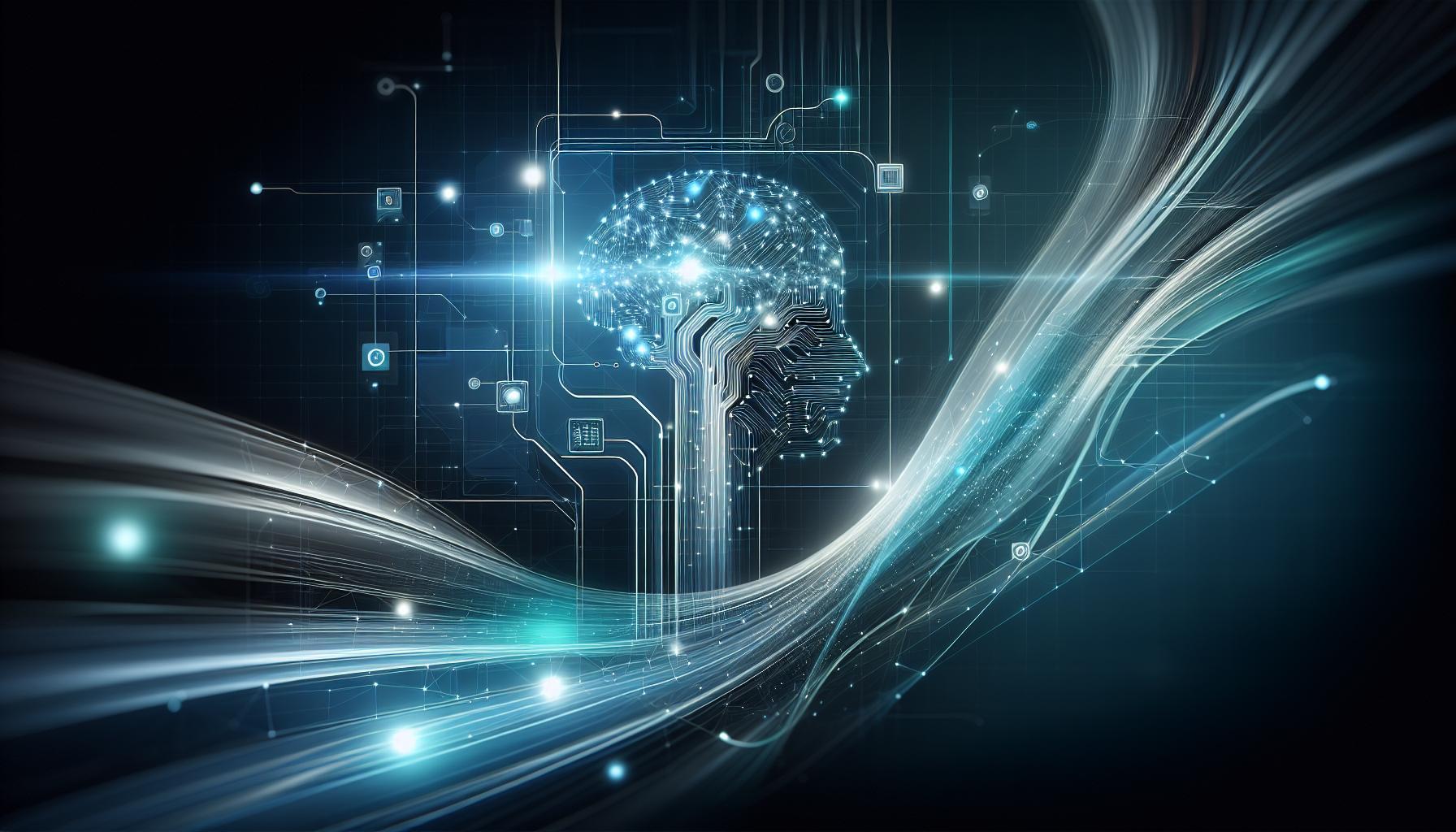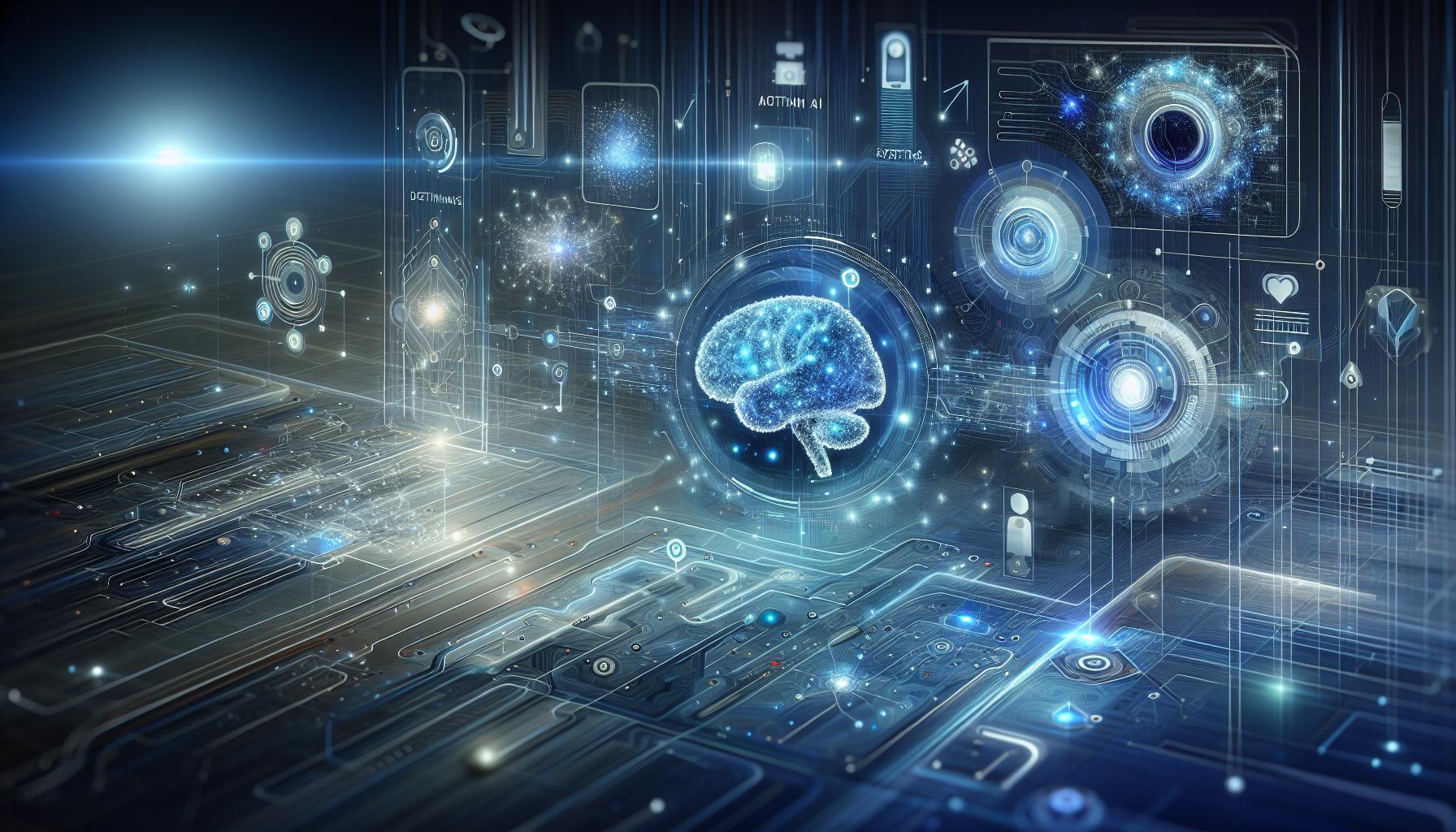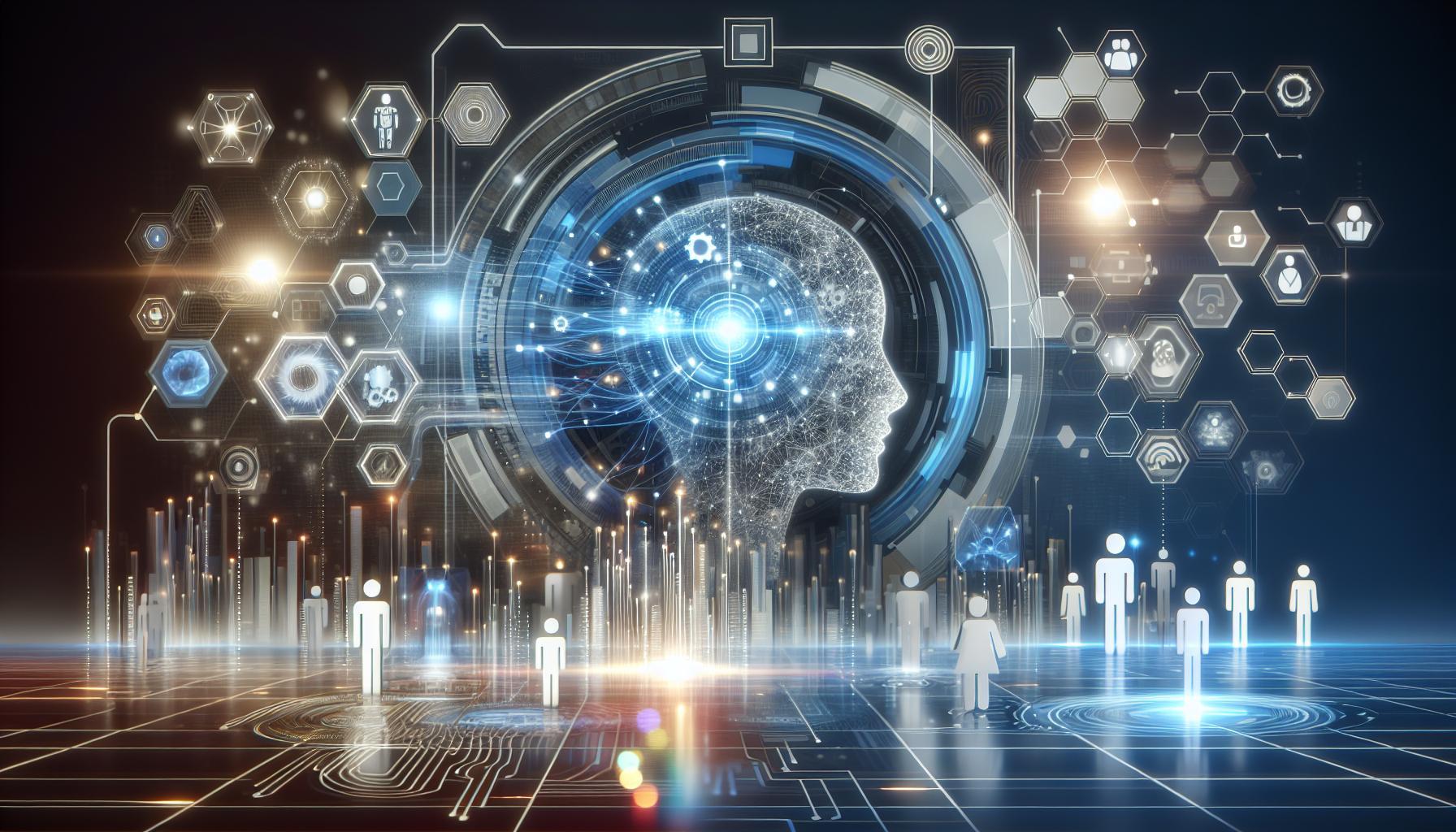As AI voice technology rapidly transforms content creation, concerns about security and privacy grow increasingly urgent. With the rise of dubbing tools and voice cloning, understanding the potential risks tied to AI-driven innovations is essential. This discussion explores whether these technologies safeguard user data and maintain ethical standards in a world of digital transformation.
Understanding AI Dubbing Technology: How It Works
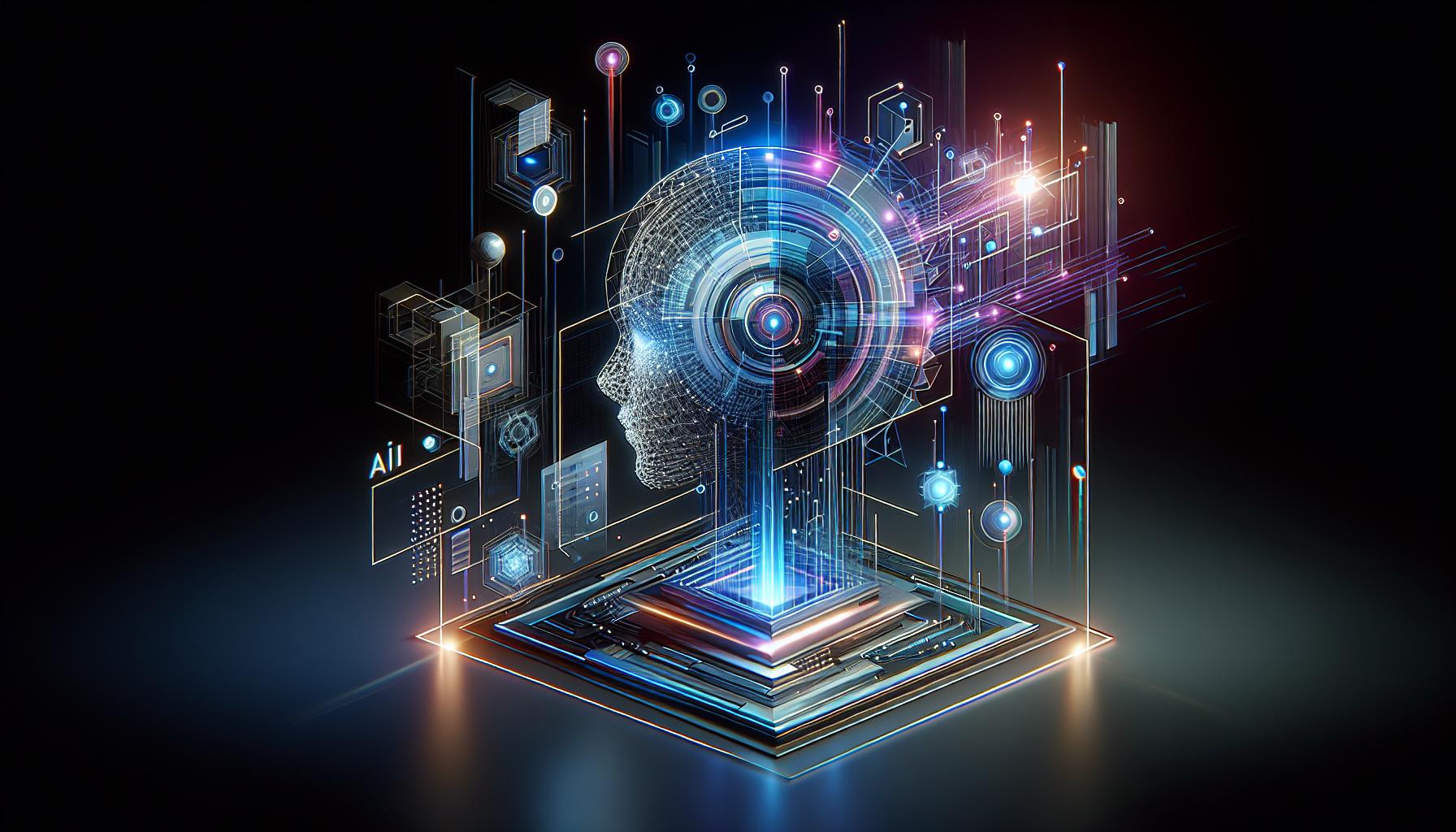
Artificial intelligence (AI) is revolutionizing the way we consume media, particularly through advancements in dubbing technology. This innovative approach allows creators to replace original dialogue with new audio in different languages while maintaining the integrity of the visual performance. AI dubbing utilizes machine learning algorithms and natural language processing to understand the nuances of speech and emotions, bringing a new level of authenticity and connection to multilingual audiences. But how does this complex technology operate behind the scenes?
The Mechanics of AI Dubbing
At the core of AI dubbing technology, several interconnected processes work seamlessly together to create a polished final product:
- Speech Recognition: The first step involves transcribing the original audio into text, allowing the AI to analyze the dialogue structure, pacing, and intonation.
- Translation Algorithms: Advanced models translate the dialogue into the target language, focusing not only on literal meanings but also on the context and cultural subtleties.
- Voice Synthesis: Using voice cloning techniques, the system generates audio that closely mimics the original speaker’s tone and emotion. This results in a more faithful reproduction, reducing the disconnect that often accompanies traditional dubbing.
- Synchronization: The final step is ensuring that the new audio fits the mouth movements and visual cues of the characters, achieving a natural flow that enhances viewer immersion.
Potential Risks and Considerations
While AI dubbing offers incredible benefits, its rise raises important questions about safety, security, and privacy. One crucial aspect to consider is the need for robust data protection measures. Many of these AI systems rely heavily on large datasets to train their algorithms, and ensuring the protection of user data and voice prints is paramount. This is where the conversation around “Is Dubbing AI Safe? Security and Privacy in AI Voice Tech” becomes essential.
To mitigate potential risks, stakeholders should implement best practices such as:
- Data Anonymization: Ensuring that any data collected for training purposes does not include personally identifiable information (PII).
- Secure Protocols: Employing encryption and secure storage methods to safeguard all data.
- Transparency in Usage: Providing clear information to users about how their voice data may be used, particularly in AI-based applications.
By embracing these measures, the future of AI dubbing can remain innovative while addressing concerns around security and privacy effectively. Engaging with these issues now is vital to ushering in a new era of dubbing technology that prioritizes user safety and satisfaction without sacrificing quality or creativity.
The Importance of Data Security in Voice Synthesis
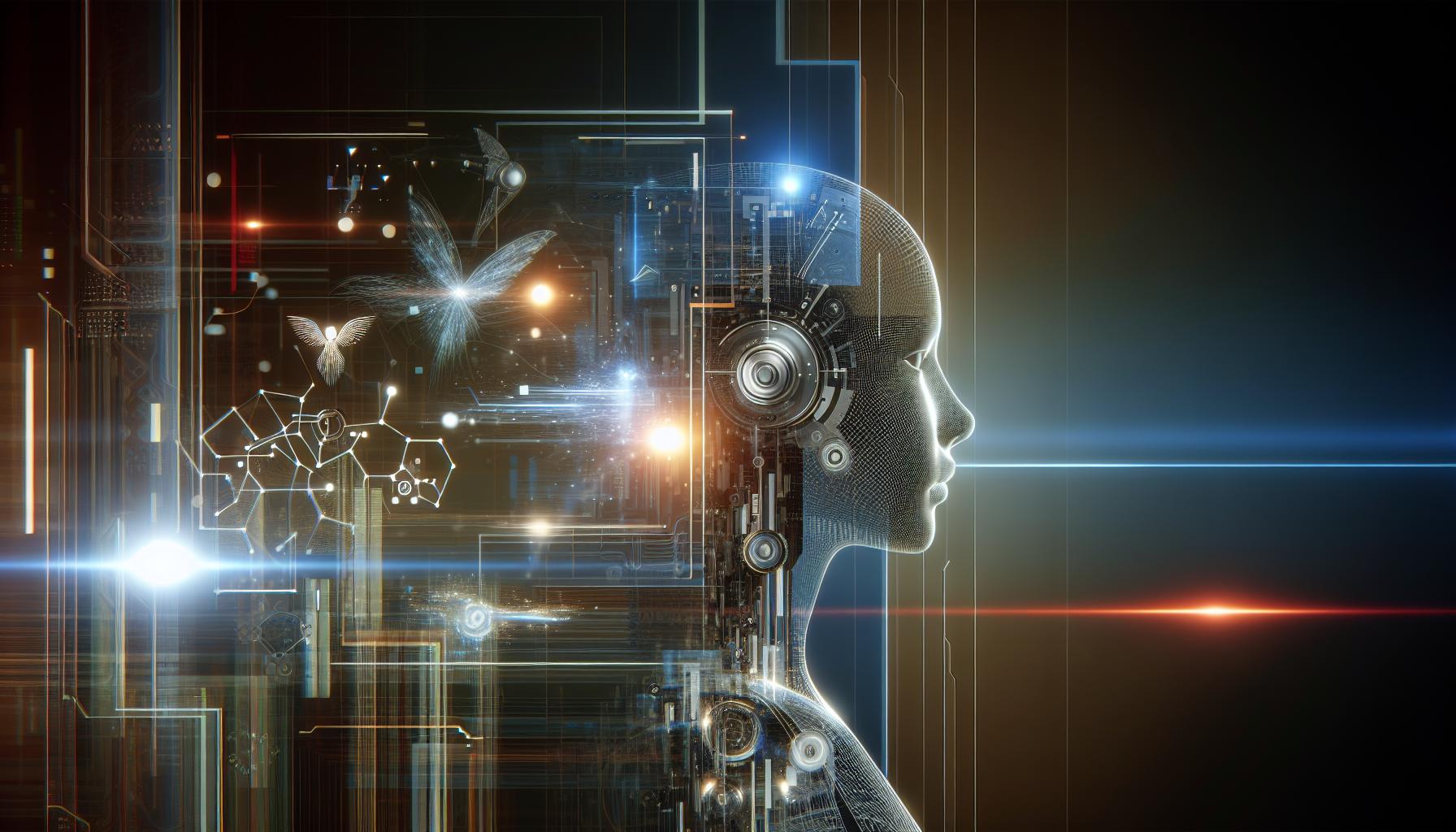
As voice synthesis technology continues to evolve, the significance of robust data security measures becomes increasingly paramount. The integration of artificial intelligence (AI) in voice dubbing has brought remarkable advancements in how we create and consume audio content, yet it has also introduced new vulnerabilities. With the capability to replicate human voices with striking accuracy, the potential for misuse and unauthorized access to sensitive data escalates. This emphasizes the critical need for stringent security protocols and practices in the realm of AI voice technology.
Understanding the Risks
The sophistication of voice synthesis can lead to risks that are both damaging and far-reaching. For instance, unauthorized individuals could exploit this technology to create deepfakes, resulting in misinformation and potentially tarnished reputations. Furthermore, the security of personal data used in synthesis processes, such as voice samples and user feedback, must be protected from breaches. Data security practices encompass a variety of protective measures, including:
- Encryption: Safeguarding data at rest and in transit is essential to prevent interception and unauthorized access.
- Access Controls: Limiting who can access sensitive data or systems helps to mitigate risks.
- Regular Audits: Conducting frequent security assessments ensures vulnerabilities are identified and addressed promptly.
Best Practices for Securing Voice Synthesis
Organizations using AI voice tech should adopt comprehensive strategies to bolster data security. This includes implementing strong authorization protocols, employing multi-factor authentication, and ensuring that all data input for voice synthesis is anonymized whenever possible. Additionally, teams should regularly update their security measures in line with emerging threats and regulatory changes. Training employees on the importance of data security in AI applications can also create a culture of vigilance and accountability.
Engaging with reputable vendors who prioritize cybersecurity in their voice synthesis solutions is critical. By fostering partnerships with firms that adhere to rigorous data protection standards, organizations can mitigate risks associated with unauthorized access and data breaches. Ultimately, ensuring robust data security in voice synthesis not only protects sensitive information but also instills confidence in users, contributing to the overall integrity of AI voice technology and its applications in dubbing and beyond.
Privacy Concerns: What Happens to Your Voice Data?

In a world where voice technology is becoming a staple in everyday interactions, understanding what happens to your voice data is crucial. The convenience offered by AI dubbing and voice recognition systems often comes at a price: the exposure of personal information to potential misuse or exploitation. When you speak to a device or service, your voice data is not just a momentary sound; it becomes a digital footprint that can be stored, analyzed, and shared beyond your control.
Potential Risks of Voice Data Exposure
The process of voice data collection involves several layers of technology, creating various privacy concerns. Here’s what you should be aware of regarding the fate of your voice data:
- Storage and Retention: Voice samples may be saved for indefinite periods, often without explicit user consent, raising concerns about long-term surveillance.
- Data Breaches: As with any digital data, voice data is susceptible to breaches, potentially exposing sensitive information.
- Third-Party Sharing: Companies often share collected data with partners or advertisers, thereby increasing the risk of exploitation.
- Usage Beyond Intended Purpose: Your voice commands may be analyzed to create user profiles for advertising, often without transparency about how your data is being used.
Best Practices for Protecting Your Voice Data
To navigate the complexities of voice data privacy, consider taking the following steps:
- Review Privacy Settings: Regularly check the privacy settings of your devices and applications to limit data collection.
- Use Strong Passwords: Protect accounts linked to voice technology with strong, unique passwords to mitigate the risk of unauthorized access.
- Limit Permissions: Minimize the number of apps that have access to your voice data and specific permissions granted to them.
- Be Aware of Policy Changes: Stay informed about the terms of service and privacy policies of the technologies you use, especially any updates that could affect your data rights.
As organizations continue to push the boundaries of what AI voice technology can achieve, it’s vital to remain vigilant about our data. The question of ‘Is Dubbing AI Safe? Security and Privacy in AI Voice Tech’ extends beyond the technology itself to encompass a broader spectrum of privacy rights and security measures that individuals must actively engage with.
The Role of Consent: Navigating AI Voice Use in Media

In an age where technology rapidly blurs the lines between reality and simulation, the implications of AI voice technology extend far beyond mere convenience and entertainment. The concept of voice dubbing, once confined to studios and professional voice actors, has now entered the realm of AI, leading to profound questions about the ethical dimensions of consent. With tools like AI-generated voices capable of imitating any speaker’s vocal characteristics, how do we navigate the complex landscape of consent in media? This crucial aspect plays a significant role in ensuring that the use of dubbing AI remains safe and ethical.
The Ethics of Consent in AI Voice Technology
To understand the importance of consent, it is essential to consider several key factors that define its ethical use in AI voice applications:
- Ownership of Voice: The uniqueness of an individual’s voice can be seen as a personal asset. Unauthorized use of someone’s voice without their consent can lead to significant legal and ethical implications.
- Representation and Misrepresentation: AI voice replication can misrepresent individuals in media, leading to potential reputational harm and misinformation. Consent ensures that individuals retain control over how their voices are portrayed.
- Transparency: Consumers should be made aware when AI voices are used in media. Consent not only fosters trust but also helps audiences discern between real and AI-generated content.
Real-World Applications and Challenges
The application of AI voice dubbing in various fields illustrates both its potential and challenges regarding consent. Take the film industry as an example. AI can generate voiceovers in multiple languages with remarkable accuracy, reducing costs and time. However, without explicit consent from the original voice actor or speaker, there is a risk of backlash and legal challenges. Here’s a simplified view of how these scenarios can work:
| Scenario | Consent Required | Potential Consequences |
|---|---|---|
| Using AI to dub a film | Voice actor’s consent | Legal action, consumer backlash |
| Creating an AI voice for advertising | Celebrity’s consent | Negative media exposure, loss of trust |
| Developing personalized virtual assistants | End-user consent | Privacy breaches, data misuse |
Real-world examples emphasize the urgency of establishing clear consent protocols. For instance, several media production companies have begun offering contracts that explicitly outline the scope of AI voice use, ensuring that all parties involved are fully informed and agreeable.
In conclusion, as we continue to explore the question, “Is Dubbing AI Safe? Security and Privacy in AI Voice Tech,” navigating the complexities of consent will be paramount. This foundational ethical principle not only protects individuals but also nurtures a responsible approach to leveraging AI voice technology in the industry.
Exploring the Risks of Misuse in AI Dubbing
The rapid advancements in AI dubbing technology have transformed how we consume media, allowing for seamless translations that can adapt to different languages and cultural nuances. However, as the technology becomes more accessible, the potential for misuse raises significant concerns. The question looms large: how safe is AI dubbing when it comes to security and privacy?
Risks Associated with AI Dubbing Misuse
The risks of misuse in AI dubbing extend far beyond mere errors in translation. The following issues highlight the vulnerabilities associated with this powerful technology:
- Deepfakes and Misinformation: With sophisticated AI voice tech, the creation of realistic deepfake audio becomes easier. This not only poses a threat to individual reputations but can also spread false information widely, affecting public opinion and even elections.
- Intellectual Property Violations: The unauthorized use of an individual’s voice or character in dubbing can lead to substantial IP breaches, prompting legal battles and financial losses for content creators.
- Privacy Concerns: Storing and processing voice data raises critical privacy issues. Organizations may inadvertently expose sensitive personal information or fail to meet legal standards for data protection, risking severe penalties.
- Manipulation of Consent: The potential to dub over a person’s voice without their permission can lead to unauthorized representation, skewing the original message and violating the rights of the individual.
Practical Implications for Users and Developers
To mitigate these risks, both users and developers need to adopt best practices when engaging with AI dubbing technologies. Here are some actionable steps:
- Implement Robust Authentication: Ensure that all parties involved in the dubbing process have verified identities to prevent unauthorized access.
- Employ AI Monitoring Tools: Utilize tools that detect deepfakes and provide analytics to identify when AI dubbing has been manipulated.
- Educate Consumers: Regular training and workshops can help users recognize manipulated content, fostering a more discerning audience.
- Establish Clear Legal Guidelines: Collaborate with legal frameworks to create clearer guidelines on data usage and voice rights, ensuring both creators and audiences are protected.
These measures can transform AI dubbing from a tool potentially fraught with risks into a safe and secure technology that empowers content creators and consumers alike. Balancing innovation with responsibility is not just a necessity; it’s crucial for maintaining trust in an increasingly automated world.
Industry Standards: Ensuring Safety in AI Voice Technologies
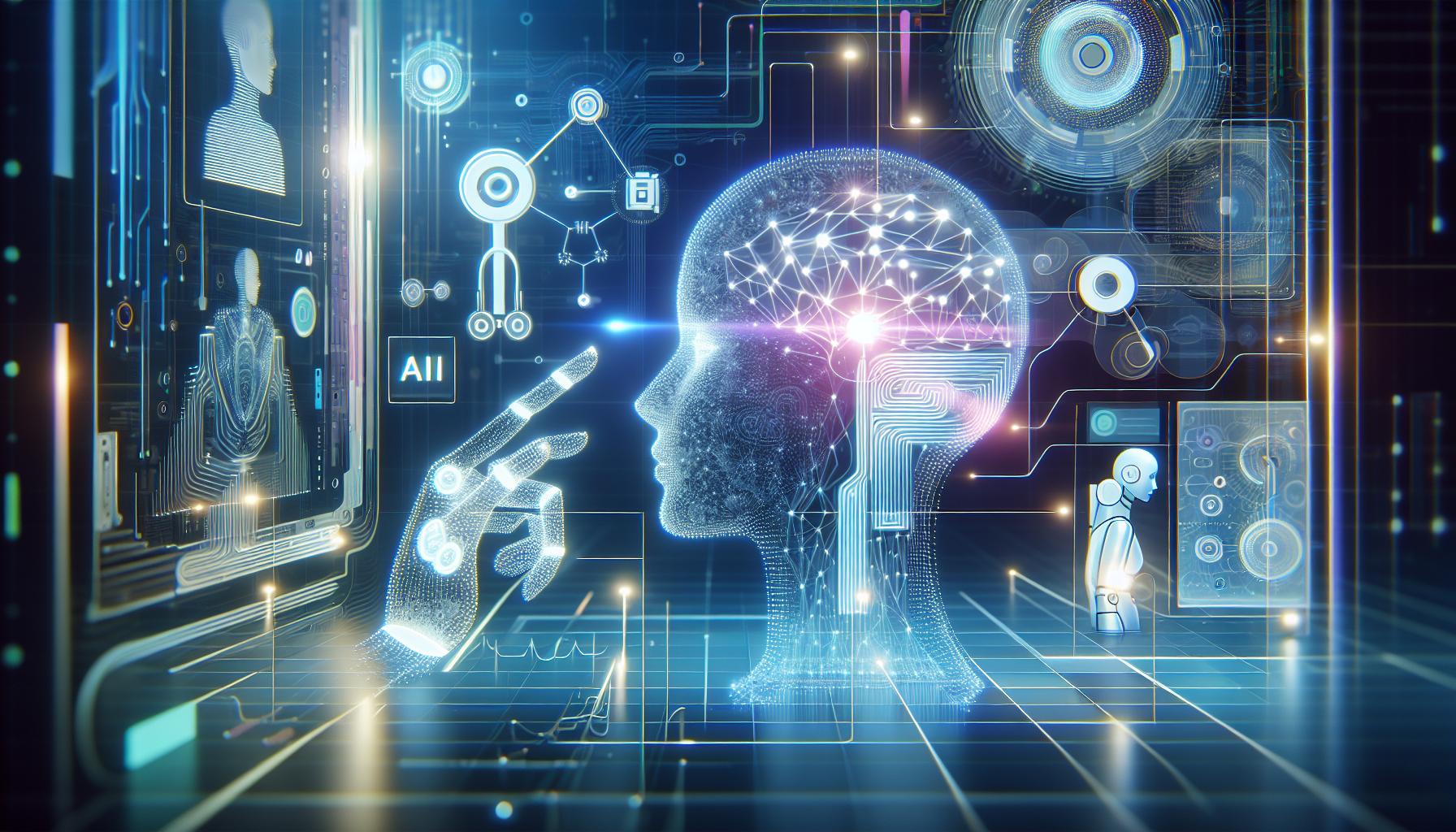
As the demand for AI voice technologies surges, particularly in dubbing applications for film and gaming, ensuring that these innovations adhere to rigorous industry standards has become paramount. The question of “is dubbing AI safe?” extends beyond mere performance; it encompasses the crucial dimensions of security and privacy associated with these powerful tools. With rapid advancements in artificial intelligence, stakeholders are increasingly scrutinizing how these technologies interact with users and data.
Understanding the Frameworks of Safety and Security
Industry standards for AI voice technologies are shaped by various frameworks and guidelines that focus on safety and ethics. Primarily, these standards are influenced by regulatory bodies, data protection laws, and ethical frameworks that prioritize user privacy. Some key aspects include:
- Data Protection Regulations: Compliance with regulations such as the GDPR (General Data Protection Regulation) in Europe ensures that personal data is processed lawfully and transparently.
- Ethical Guidelines: Following ethical AI guidelines helps in addressing potential biases and preventing misuse of AI technologies.
- Security Protocols: Implementing robust security measures to protect against data breaches is critical, particularly for applications that handle sensitive information.
Real-World Applications and Compliance
For instance, leading companies in AI voice technology have begun implementing stringent compliance measures to mitigate risks. Many are adopting security audits and third-party assessments to evaluate their voice synthesis systems and ensure adherence to best practices.
| Company | Compliance Measures | Key Focus Areas |
|---|---|---|
| TechCorp | GDPR Compliance Audits | User Consent and Data Anonymization |
| VoiceCreate | ISO/IEC 27001 Certification | Data Security and Integrity |
| SoundWave Innovations | Regular Security Penetration Testing | Ethical AI Development |
These measures not only enhance user trust but also establish a foundation for safe practices in dubbing AI, answering the pressing question of whether these technologies can be used securely for various applications, from entertainment to education.
Actions for Developers and Users
For both developers and users of AI voice tech, proactive measures can be taken to ensure safety. Developers are encouraged to integrate advanced encryption methods to safeguard voice data and to conduct regular assessments of their systems against established standards. On the user side, understanding data usage policies and being vigilant about the types of consent provided during application onboarding can greatly influence privacy outcomes.
In summary, as we navigate the landscape of “Is Dubbing AI Safe? Security and Privacy in AI Voice Tech,” it becomes evident that adhering to industry standards is not just a legal requirement but a key component in building a trustworthy relationship with users. By prioritizing safety and security, the potential of AI voice technologies can be harnessed responsibly and ethically, serving diverse applications without compromising the integrity of personal data.
Best Practices for Protecting Your Voice and Personal Information
The rise of AI voice technology has revolutionized industries by enabling advanced features such as dubbing and voice synthesis. However, this innovation raises critical questions about the safety of our voice and personal information. As individuals and businesses increasingly rely on dubbing AI for content creation, understanding best practices for safeguarding personal data and voice integrity is essential for navigating the evolving landscape of AI voice tech.
Understand the Risks
To effectively protect yourself, it’s crucial first to comprehend the specific risks associated with AI voice technology. This includes potential misuse of your voice, unauthorized recordings, and data breaches of personal information linked to voice profiles. For instance, a voice clone could be used for fraudulent activities, such as impersonating an individual during calls to gain sensitive information.
Best Practices for Voice Protection
When engaging with AI voice solutions, implement the following protective measures:
- Limit Sharing of Voice Data: Be cautious about where and how you share your voice samples. Opt for platforms that provide transparency about data usage.
- Use Voice Authentication: Implement voice recognition features to secure access to sensitive accounts. This adds an extra layer of security against potential impersonation.
- Review Privacy Policies: Before using any AI voice technology, thoroughly read the privacy policy to understand data handling practices.
- Regularly Update Security Settings: Ensure that devices and applications are updated, as updates often include patches for security vulnerabilities.
Safeguarding Personal Information
In addition to protecting your voice, securing your personal data is crucial. Here are some strategies to adopt:
- Use Strong and Unique Passwords: Ensure that all accounts associated with your voice tech use complex passwords that are not easily guessable.
- Enable Two-Factor Authentication (2FA): Whenever possible, add 2FA to accounts to make unauthorized access more difficult.
- Monitor AI Activity: Keep track of how your voice and personal information are being used by regularly reviewing account activity and settings.
- Stay Informed: Follow news and updates related to AI voice tech to understand evolving threats and best practices.
Real-World Example
Consider the case of a popular streaming platform leveraging dubbing AI for localized content. The platform emphasizes user privacy by employing end-to-end encryption for voice data and implementing strict access controls. By adopting such measures, they ensure that sensitive audio data is not accessible to unauthorized users or potential cybercriminals. Their commitment to security engenders trust among users, showcasing how companies can balance innovation with privacy needs.
By being proactive in employing these best practices, users can mitigate risks and confidently utilize AI voice technology while minimizing threats related to safety and privacy in the context of dubbing AI.
The Future of AI Dubbing: Balancing Innovation and Ethics
As artificial intelligence continues to advance, the landscape of dubbing technology is evolving rapidly, promising to change how we consume and produce media across the globe. The progress we’re witnessing is not just in voice synthesis and translation but in the very fabric of creative storytelling. However, with innovation comes responsibility, and the pressing question of whether dubbing AI is safe dominates discussions surrounding its implementation. Balancing the allure of cutting-edge technology with ethical considerations is crucial if we’re to harness its full potential without compromising security and privacy.
Understanding the Ethical Implications
AI dubbing holds the promise of breaking language barriers and making global content accessible to diverse audiences. Yet, it raises grave ethical concerns, particularly around the potential misuse of voice technology. For instance, the ability to replicate a person’s voice raises issues of consent and authenticity. Imagine a video where an influential figure appears to endorse a product they have never supported. This potential for misuse signifies that the future of AI in dubbing must prioritize ethical standards alongside technological advancements.
Key ethical considerations include:
- Consent: Ensure that voice data is used with the explicit permission of the individual.
- Transparency: Audiences deserve to know when they are engaging with AI-generated content.
- Accountability: Establishing protocols for addressing misuse or controversies arising from AI-generated content.
Security Measures and Privacy Protections
To enhance trust and mitigate risks, implementing robust security measures is vital. The development of AI dubbing technology must be accompanied by strong data protection policies. Organizations must invest in secure processing technologies that protect the voice datasets from unauthorized access or breaches. For instance, utilizing techniques such as encryption and anonymization can shield personal data from exploitation while allowing developers to benefit from advancements in AI voice tech.
| Security Measure | Description |
|---|---|
| Encryption | Protects data by converting it into a secure format that can only be read or processed after decryption. |
| Anonymization | Removes identifiable characteristics from data, making it impossible to link back to the individual. |
| Access Control | Limits who can access sensitive AI voice data, adding layers of security. |
As we navigate through the potential pitfalls and advantages of AI dubbing, it’s crucial to foster a dialogue among developers, regulators, and users. By prioritizing innovation alongside ethical considerations, we can ensure that advancements in AI voice technology not only benefit society but do so in a manner that is safe and respectful of individual rights. Future developments must advocate for a transparent, accountable approach that builds trust and addresses the question, “Is Dubbing AI Safe?” effectively.
Q&A
Is Dubbing AI Safe? Security and Privacy in AI Voice Tech?
Dubbing AI is generally safe, but concerns about security and privacy remain. The technology uses voice synthesis that can imitate real people, raising issues on misuse and consent. It’s essential to assess the provider’s security measures and data handling practices before using AI voice technology.
For example, unauthorized use of voice replicas can lead to identity theft or misinformation. To mitigate risks, always check that the company follows strict data privacy regulations and has transparent policies regarding consent and data usage.
For more information, you may want to explore our section on data security in AI to understand better how to protect yourself while using AI voice tech.
What is Dubbing AI?
Dubbing AI refers to artificial intelligence technology that generates voice-overs and translations for multimedia content. This technology enables creators to localize content efficiently, often using advanced neural networks to produce realistic voice audio.
By utilizing machine learning algorithms, dubbing AI can mimic specific voice characteristics, making it a popular choice for filmmakers and content creators. However, understanding the ethical implications and potential for misuse is crucial as this technology advances.
Can I Trust AI Voice Technology to Protect My Privacy?
Look for platforms that employ strong encryption, clear consent protocols, and transparent data handling procedures. Additionally, consider reading reviews or checking for compliance with industry standards like GDPR to ensure your personal data is safe.
Why Does Security Matter in AI Voice Tech?
Potential risks include identity theft, fraudulent activities, or the creation of misleading content. Strengthening security measures and implementing robust consent frameworks can help ensure the responsible use of AI voice tech.
What Are the Risks of Using Dubbing AI?
Furthermore, if the technology is misused, it could contribute to the spread of misinformation. Staying informed about the ethics and security practices of the AI service you use is crucial to mitigating these risks.
How to Protect Myself When Using Dubbing AI?
Additionally, be cautious about sharing sensitive information. Implement two-factor authentication where available, and regularly monitor any AI-generated content to ensure authenticity and correct use.
Is Consent Necessary When Using Dubbing AI?
Respecting ethical guidelines not only fosters trust among users but complies with legal standards to protect against misuse. As technology advances, clear consent processes will be increasingly important in maintaining responsible AI practices.
Key Takeaways
In conclusion, the safety of dubbing AI and its implications for security and privacy are critical topics that warrant our attention. As we’ve explored, while AI voice technology offers immense potential for enhancing communication, it also raises significant concerns about data protection and ethical usage.
Understanding the nuances of how AI operates—such as the data it uses and the potential vulnerabilities—empowers us as users to make informed decisions. It’s crucial to stay vigilant about the technologies we engage with and the data we share, ensuring that we advocate for transparency and security in AI applications.
We encourage you to delve deeper into this fascinating field. Explore the latest developments, best practices, and privacy policies to make the most of AI voice technology while safeguarding your interests. Stay informed, stay curious, and join the conversation about the responsible use of AI in our increasingly digital world.


